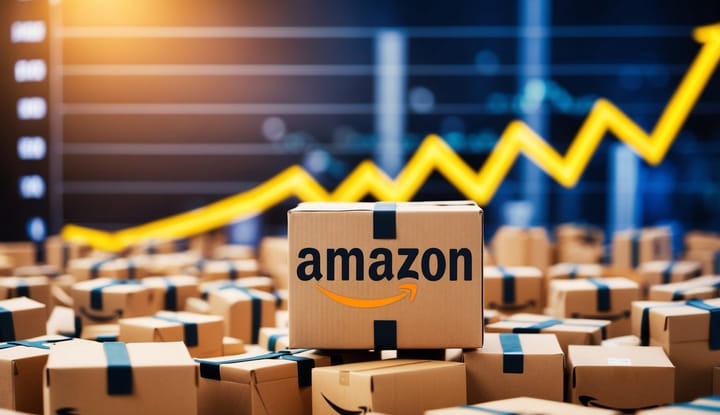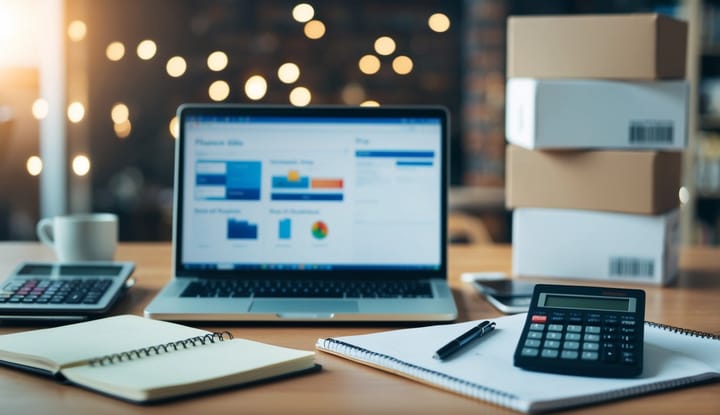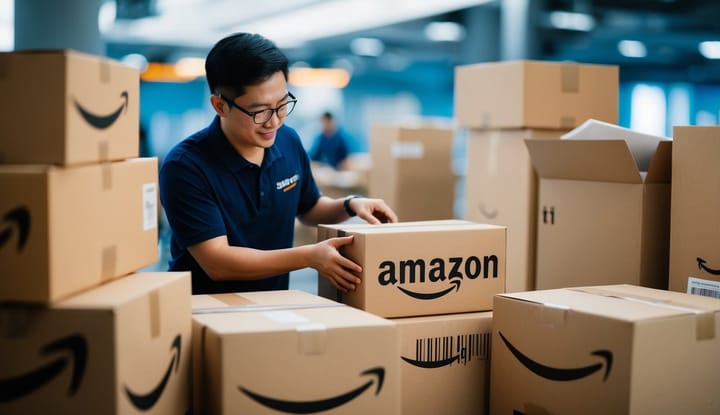Amazon FBA Fees Explained: A Comprehensive Guide for Sellers
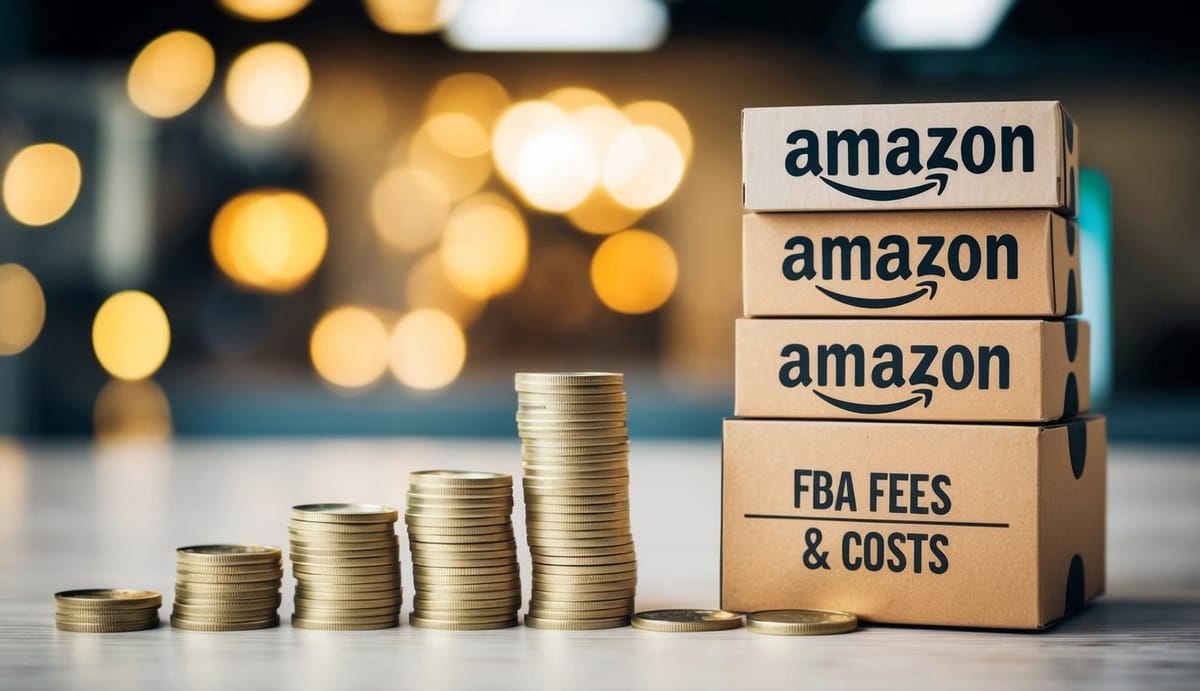
Amazon FBA fees play a vital role in the success of online sellers. These fees cover storage, fulfillment, and shipping costs for products stored in Amazon's warehouses. The 2025 fee structure brings notable changes that affect seller profits and strategies.
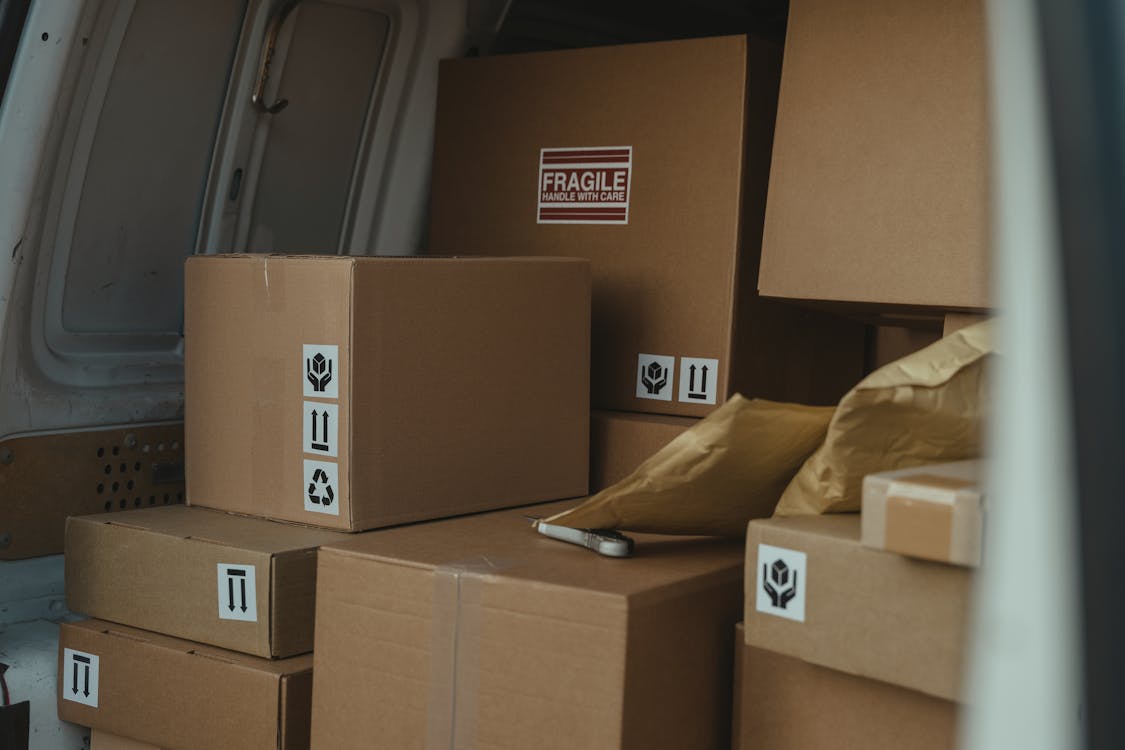
Amazon's 2025 FBA fee updates include reduced storage costs of $0.78 per cubic foot and lower inbound placement fees for large items, with fulfillment fees staying the same as 2024 non-peak rates. These adjustments give sellers new opportunities to improve their margins while maintaining the benefits of Amazon's world-class fulfillment network.
Sellers who adapt to these fee changes can optimize their inventory management and boost profitability. The reduced storage fees make it more affordable to keep products in Amazon's warehouses, while the lower placement fees help sellers with larger items maintain competitive prices.
Key Takeaways
- Storage fees are decreasing to $0.78 per cubic foot in 2025
- Inbound placement fees for large items are dropping by an average of $0.58 per unit
- Non-peak fulfillment fees remain unchanged from 2024 rates
Understanding Amazon FBA Fees in 2025
Amazon FBA fees include fulfillment costs for picking, packing and shipping items, plus monthly storage charges that vary by season. The fee structure uses a tiered system based on product size and weight.
Breakdown of FBA Fee Structure
FBA fees fall into two main categories: fulfillment and storage. The basic fulfillment fee covers picking, packing, shipping, and customer service.
Additional fees apply for oversized items, dangerous goods, and items requiring special handling. These vary by product type and dimensions.
The FBA calculator helps sellers estimate total costs before listing products. Input dimensions, weight, and price to see projected fees and profit margins.
Fulfillment Fees and How They Are Calculated
Standard-size item fulfillment fees range from $0.89 to $1.11 per unit in 2025. The exact amount depends on weight and size tier.
Size tiers include:
- Small (10 oz or less)
- Regular (10-20 oz)
- Large (over 20 oz)
Weight and dimensions determine the final fulfillment fee. Heavier items and larger packages cost more to process and ship.
Peak season surcharges apply during Q4 (October-December). Fees increase by 5-10% during this busy period.
Inventory Storage Fees Explained
Monthly storage fees are charged per cubic foot of space. Rates change based on time of year:
- January-September: $0.75/cubic foot
- October-December: $2.40/cubic foot
Long-term storage fees apply to items stored over 365 days. These fees encourage sellers to manage inventory effectively.
Dangerous goods and temperature-controlled items have higher storage rates. The FBA calculator factors in these special storage requirements.
Inventory age affects storage costs. Amazon charges more for items that stay in warehouses longer than 6 months.
Strategies for Cost-Effective FBA Management
Smart management of Amazon FBA costs makes a big difference in seller profits. The right inventory choices and storage planning can cut fees while keeping good sales numbers.
Reducing Long-Term Storage Fees
Long-term storage fees start when items stay in Amazon warehouses past 365 days. These fees often range from $6.90 to $15 per cubic foot of space.
Sellers should check inventory age reports each month to spot items at risk of long-term fees. Moving or selling older stock before the 365-day mark helps avoid these charges.
Consider removing slow-moving products from FBA to store them elsewhere. Setting up automatic removal orders for items nearing the fee threshold saves money.
Optimizing Inventory for Better Profitability
Regular stock level reviews help maintain the right amount of inventory. Too much stock ties up money and leads to storage fees, while too little means lost sales.
Using the Inventory Performance Index helps track four key metrics:
- Excess inventory percentage
- Stranded inventory percentage
- FBA in-stock rate
- Sell-through rate
Set reorder points based on past sales data and seasonal trends. Products with steady sales patterns need less safety stock than seasonal items.
A good rule is keeping 30-60 days of inventory for most items. High-volume products might need more stock, while slow movers can have less.
Maximizing Revenue with Amazon FBA
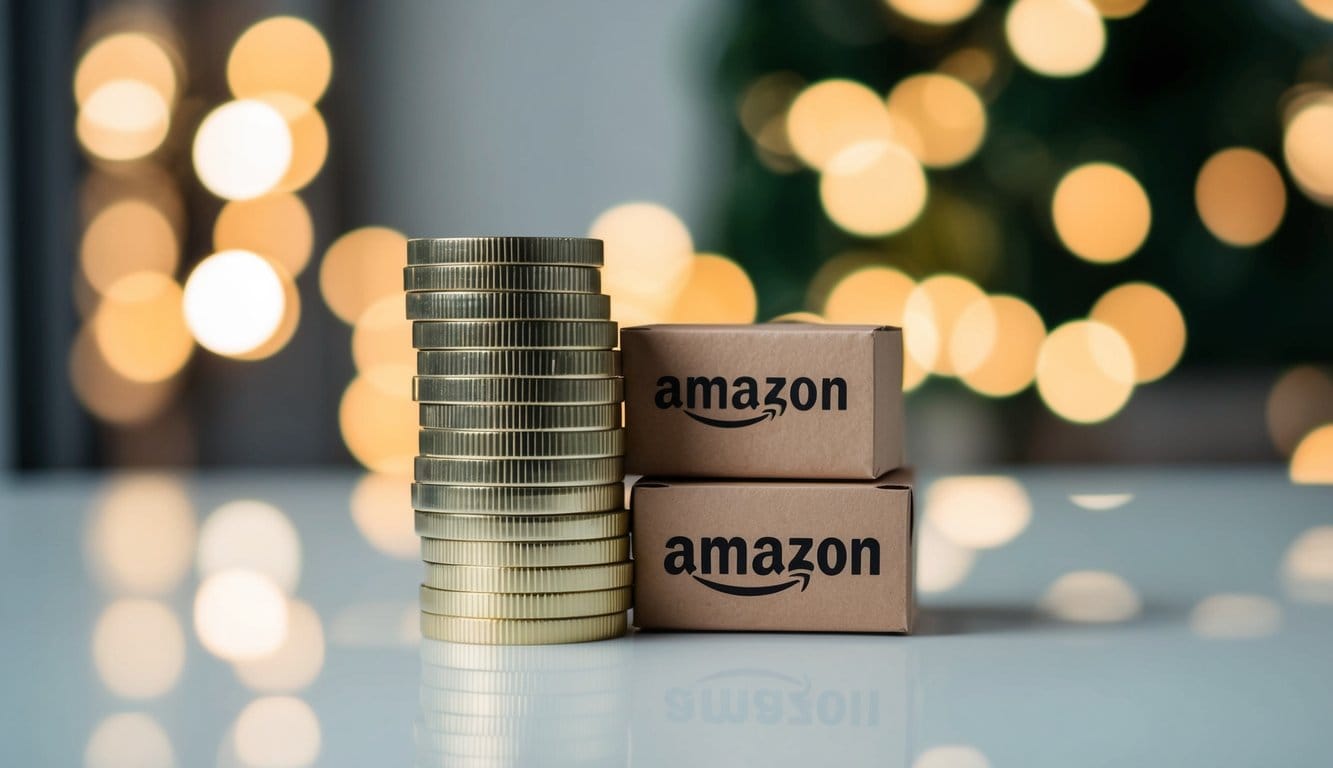
Smart strategies and tools help FBA sellers boost their profits while managing costs. The right approach to calculations, fulfillment options, and performance metrics creates opportunities for increased sales and better margins.
Leveraging the FBA Revenue Calculator
The FBA Revenue Calculator helps sellers make data-driven decisions about product pricing and profitability. Sellers can input product costs, dimensions, and pricing to see estimated FBA fees and profit margins.
The calculator shows exact fulfillment costs, storage fees, and other expenses for each product listing. This helps sellers pick items with healthy profit potential.
Key metrics to analyze:
- Product dimensions and weight
- Storage duration estimates
- Shipping costs to Amazon
- Competition pricing
- Target profit margins
Effectively Utilizing Multi-Channel Fulfillment Options
Multi-channel fulfillment lets sellers use Amazon's warehouses to fulfill orders from other sales channels like Walmart, eBay, or their own websites.
FBA handles packaging, shipping, and customer service across all channels. This creates a unified inventory system that saves time and reduces complexity.
Sellers can often get better shipping rates through Amazon than they could independently. The automated system reduces manual work and human error.
Understanding FBA's Impact on Amazon Prime and Seller Performance
FBA products automatically qualify for Prime shipping, which can increase sales by 30-50%. Prime members tend to shop more frequently and spend more per order.
Meeting Prime shipping standards improves seller metrics and Buy Box eligibility. Fast delivery and professional packaging boost customer satisfaction scores.
Key performance benefits:
- Prime badge visibility
- Better search rankings
- Higher conversion rates
- Improved customer feedback
- More Buy Box wins
Smart inventory management helps maintain these advantages while controlling storage costs. Regular performance monitoring helps identify areas for optimization.
FBA Versus FBM: Comparing Fulfillment Options

Amazon sellers need to choose between using Fulfillment by Amazon (FBA) or managing their own shipping through Fulfilled by Merchant (FBM). Each option comes with different costs and benefits that affect profitability.
Pros and Cons of Amazon FBA
FBA lets Amazon handle storage, shipping, and customer service. The program costs 70% less per unit compared to other premium fulfillment services in 2025.
Sellers get access to Prime shipping badges, which can boost sales and visibility. Products stored in Amazon's warehouses qualify for fast 1-2 day delivery.
The main drawback is fees. FBA charges both fulfillment and storage fees for warehouse space and order processing. These costs add up quickly for large or slow-moving inventory.
When to Choose Fulfilled by Merchant
FBM works best for sellers with existing warehouse space and shipping operations. This option gives complete control over inventory and shipping methods.
The basic selling fees remain the same as FBA in 2025. The key difference is avoiding storage and fulfillment charges from Amazon.
FBM sellers must handle:
- Warehouse storage
- Order packing
- Shipping logistics
- Customer service
- Returns processing
Products with low margins or large sizes often do better under FBM due to reduced fees. Seasonal items can avoid long-term storage charges through self-fulfillment.
Frequently Asked Questions
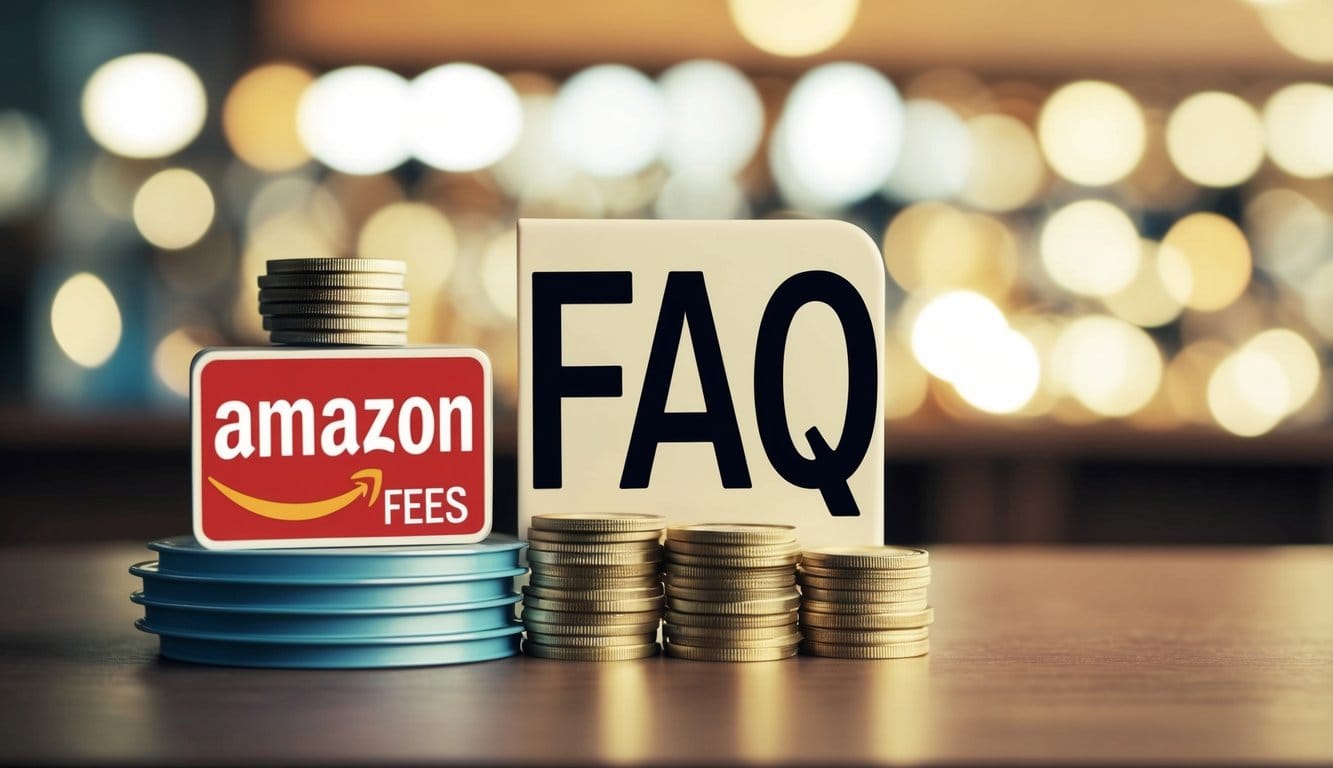
Amazon sellers need accurate information about FBA fees to plan their business costs and maximize profits. The fee structure includes multiple components that affect different types of products and selling situations.
Q: How are Amazon FBA fees calculated in 2025?
Amazon FBA fees combine fulfillment and storage costs based on product size, weight, and storage duration. The basic fulfillment fee covers picking, packing, and shipping to customers.
Products fall into different size tiers that determine their fees. Standard-size items cost between $0.89 to $1.11 per unit.
Q: What changes in Amazon FBA fees have been introduced for the year 2025?
Standard-sized product fees decreased by $0.20 per unit in 2025. Large bulky items saw a reduction of $0.61 per unit.
Peak season rates apply during busy periods. On January 15, 2025, fees returned to regular non-peak rates, matching 2024's non-peak pricing.
Q: How can sellers reduce or avoid certain Amazon FBA fees?
Sellers can minimize fees by maintaining efficient inventory levels. Removing slow-moving products helps avoid long-term storage fees.
Using proper product measurements and weight details prevents incorrect tier classifications.
Q: Are there any new rules implemented by Amazon that affect FBA fees in 2025?
Amazon introduced an inbound placement service fee based on product size tiers and shipping weight. This fee varies depending on where sellers send their inventory.
Q: How does the updated Amazon FBA fees structure impact storage costs?
Storage fees depend on product size tiers and how long items remain in warehouses. The fees adjust based on historical supply levels.
Q: What tools are available to accurately estimate Amazon FBA fees for sellers?
Amazon provides a Revenue Calculator to estimate fees for specific products. The Seller Central dashboard shows detailed fee breakdowns.
Third-party calculator tools help compare costs across different marketplaces and selling methods.
Q: What are the main types of fees I should know about when I use Amazon FBA?
When you use FBA, you'll encounter various fees, including the FBA fulfillment fee, referral fee, and storage fees. Each of these fees plays a role in how much it costs to sell on Amazon.
Q: How do I calculate Amazon FBA costs for my products?
To calculate Amazon FBA costs, you need to consider the fulfillment fee, referral fee, and any storage fees. You can find a handy FBA calculator on Amazon Seller Central to help you crunch the numbers!
Q: What is the referral fee and how is it calculated?
The referral fee is a percentage of the total selling price of your product, and it varies by category. Amazon takes this fee for facilitating the sale, so it’s important to account for it in your pricing strategy.
Q: What are Amazon storage fees and when do they apply?
Amazon storage fees are charged for storing your products in their warehouses. You’ll pay a monthly storage fee based on how much space your products take up, and there are also long-term storage fees if items sit unsold for over 365 days.
Q: Can you explain the FBA fulfillment fee?
The FBA fulfillment fee is what Amazon charges for picking, packing, and shipping your products to customers. This fee varies based on the size and weight of the item, so it's crucial to know these details when pricing your products.
Q: What are the monthly storage fees for FBA?
Monthly storage fees are charged based on the amount of space your inventory occupies in an Amazon warehouse. These fees are typically lower during the first half of the year and increase during the peak holiday season, so plan accordingly!
Q: How do return processing fees work with Amazon FBA?
If a customer returns your product, there’s a return processing fee that applies. This fee is usually charged for items that fall under certain categories, so make sure to check the specifics for your products.
Q: What is the Amazon FBA small and light program?
The Amazon FBA small and light program is designed for sellers with lower-priced, lightweight items. It offers reduced fulfillment and storage fees, making it a great option for selling inexpensive products.
Q: How can I keep my Amazon FBA charges under control?
Keeping FBA charges in check involves regularly reviewing your inventory, optimizing your storage utilization, and ensuring you're aware of all fees charged by Amazon. It’s all about being proactive and strategic!
Ready to Take Control of Your Amazon FBA Costs?
Join our mini-course at WAH Academy and learn how to price smarter, cut hidden fees, and boost your profit margins—without the guesswork.
No fluff. No confusion. Just real strategies to help you sell more and keep more.
Tap the button and start optimizing your FBA business today.

